Not many know that more than 138 volcanoes are hiding beneath the icy wastelands of Antarctica. Could this mean that volcanoes are playing a role in the massive loss of polar ice?
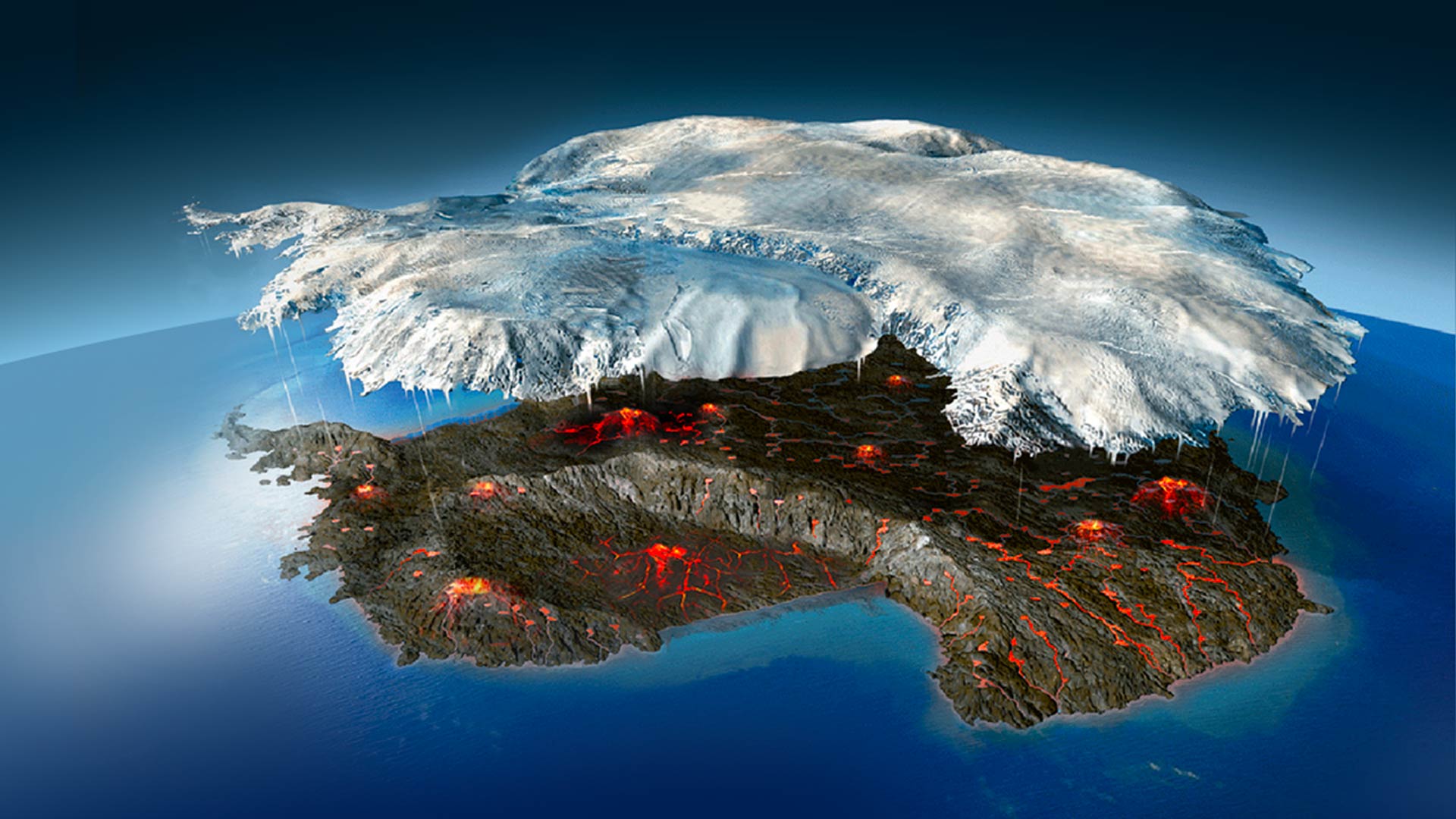
Antarctica is located on a hot bed of volcanoes. Image Source: What If
Antarctica is Earth’s southernmost, and fifth largest continent. It covers the geographic South Pole and is surrounded by the Southern Ocean. This polar desert is the coldest, and windiest continent, and has the highest average elevation. Interestingly, around 70% of the world’s freshwater is frozen in Antarctica.

It is also home to the largest volcano range on earth, and it’s the largest glaciovolcanic province in the world. Its volcanos occur throughout a distance of 3106,85 miles (5000 kilometers), from the sub-Antarctic South Sandwich Islands all the way to East Antarctica. Scientists have known about the volcanoes under Antarctica for a long time, but their exact number was a mystery. In 2020, however, a study by researchers from University of Edinburgh revealed that 138 volcanoes are in West Antarctica alone. 91 of these were previously unknown.
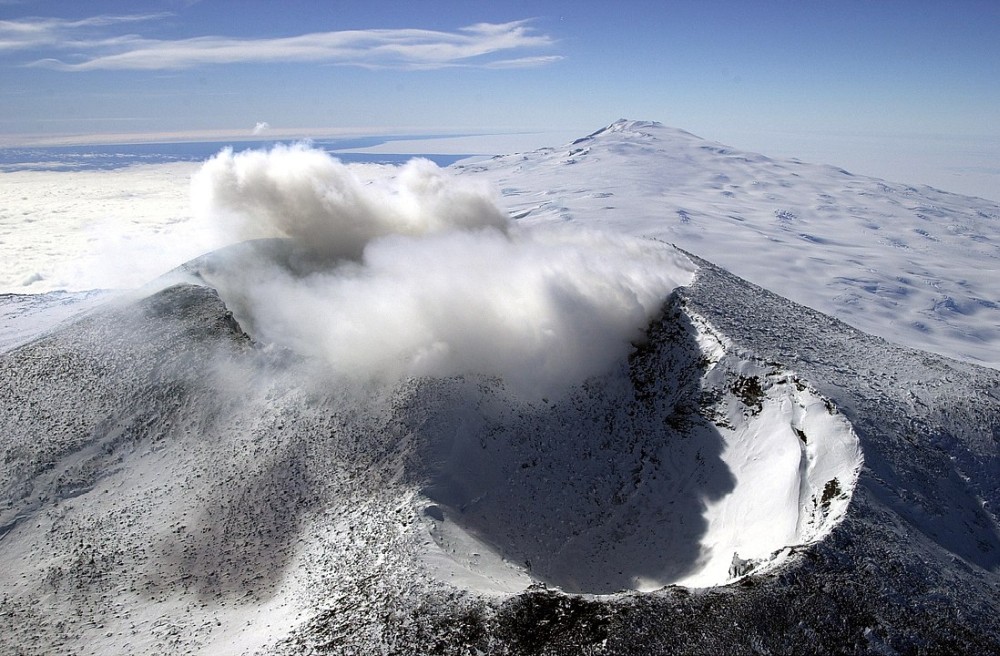
Aerial view of Mount Erebus’ crater. Image credit: NSF/Josh Landis
Out of these 138 known volcanoes, only 2 are active; the currently most active Mount Erebus, and Deception Island, which is the exposed tip of an active shield volcano. Both of them have erupted in recent years, but neither of them have caused serious destruction. Furthermore, analyses of rock samples do reveal eruptive events in the last 100,000 years, which can be seen in ice samples as well. But there’s no evidence of dramatic volcanic eruptions in Antarctica in the recent geologic past.
However, some have been speculating that volcanic activity on the continent could play a vital a role in the loss of Earth’s polar ice sheets. Could this be the case?
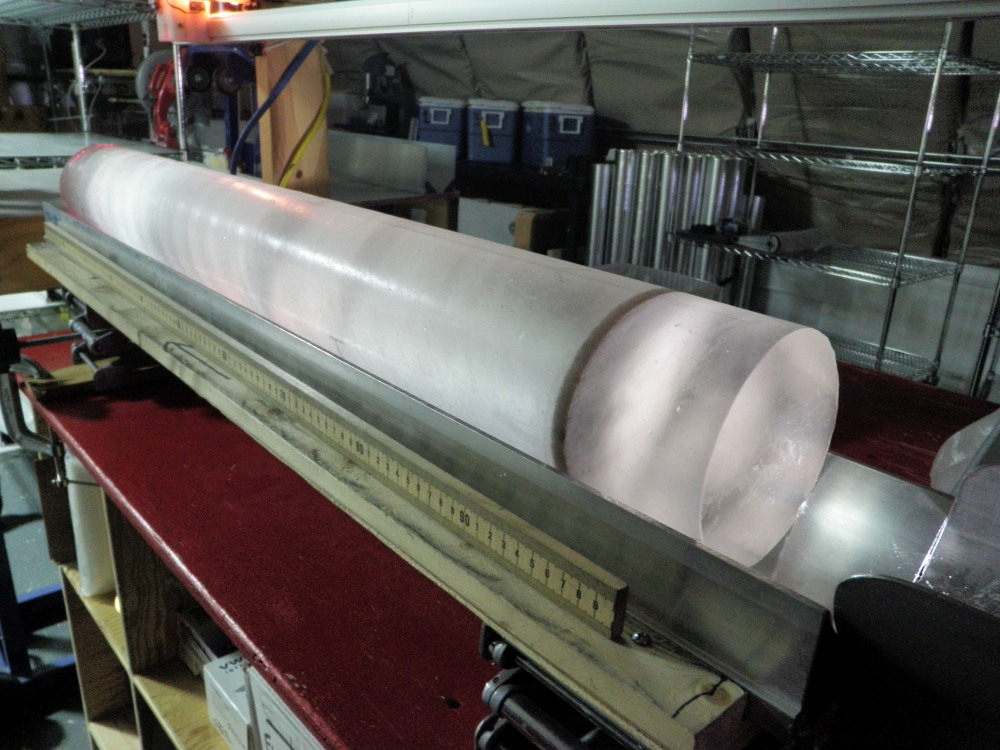
Ice core from West Antarctica. The black layer is volcanic ash that settled on the ice sheet approximately 21,000 years ago. Image credit: Heidi Roop, National Science Foundation
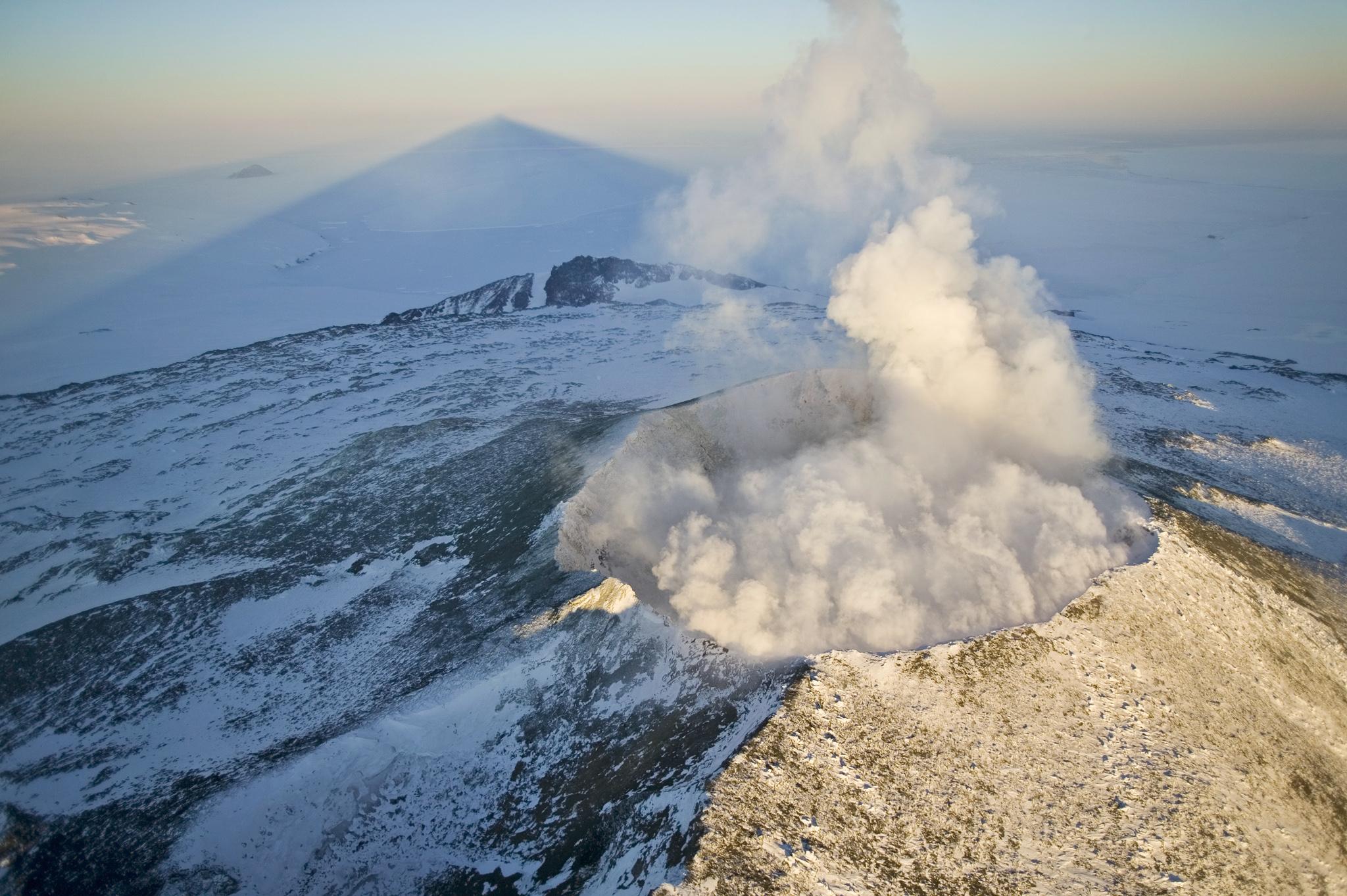
A loss of ice mass can indeed be observed in Antarctica, with approximately 146 gigatons of ice disappearing from the continent every year, since 2002. A 2017 study published by Loose et al. found evidence of a volcanic heat source beneath the ice shelf by measuring the composition of isotopes of helium in glacial meltwater flowing from the Pine Island Glacier Ice Shelf, the fastest melting glacier in Antarctica. The team of researchers pointed out that the volcanic heat source may be triggering melting beneath the glacier. However, they concluded that volcanic heat doesn’t play an important role in the mass-melting of the glacier. Instead, the most likely factor in the melting is the warming temperatures of the ocean that surrounds the massive land of Antarctica.
While volcanic activities in Antarctica do cause a minimal amount of melting, scientists agree that it doesn’t contribute to the massive ice loss that can be observed on the continent. The Antarctic ice sheet is millions of years old and it has experienced much wilder volcanic activity in the past, so it shows that the continent can endure an even stronger volcanic devastation.
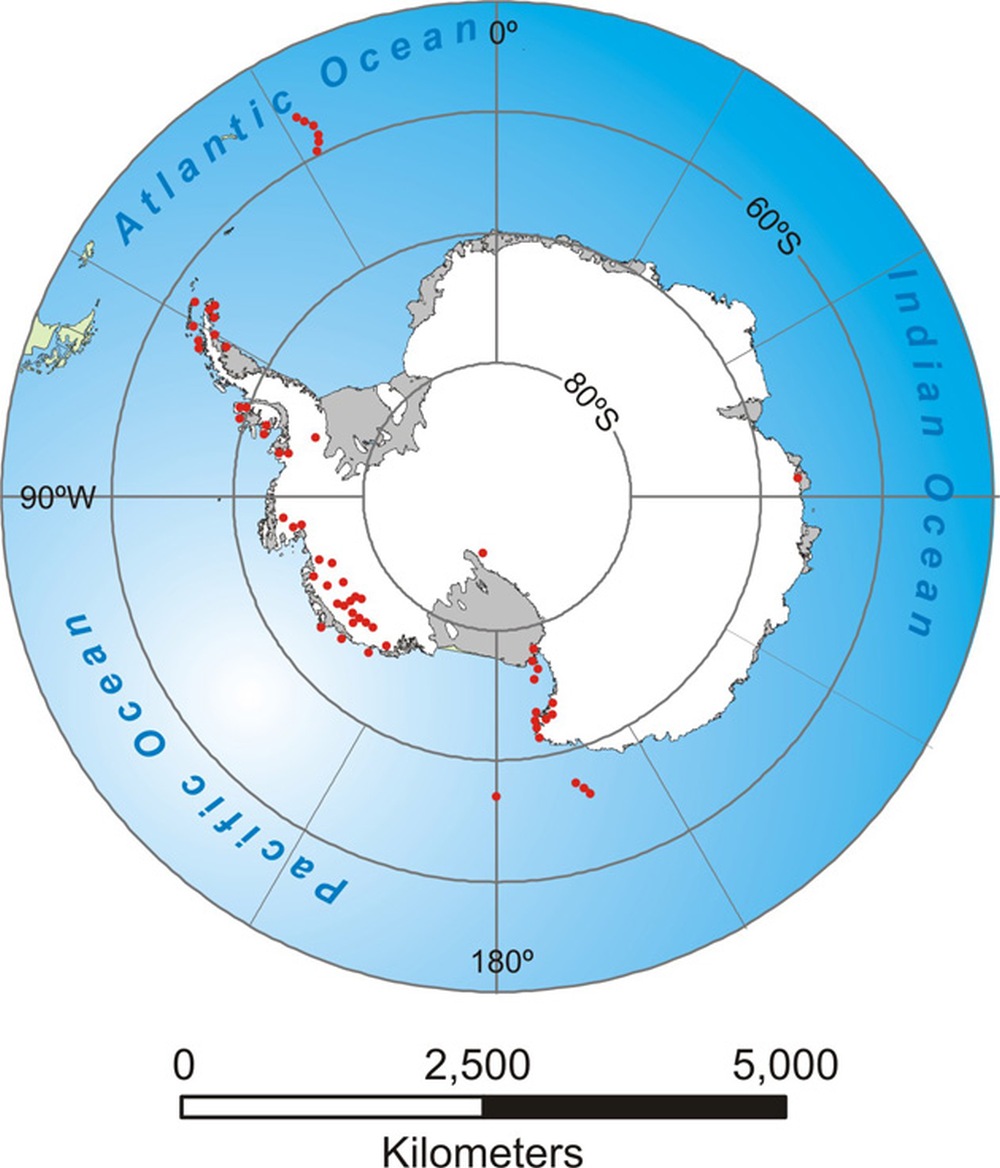
Map of Antarctica showing the location of volcanoes aged between c. 11 Ma (million years) and present. Image credit: Attribution-NonCommercial-ShareAlike
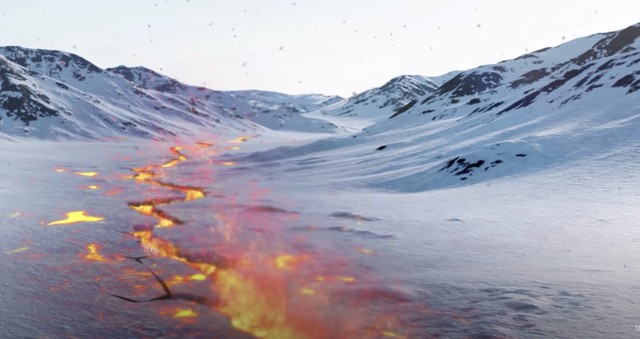
So, for now, there’s no need to worry about the volcanoes of Antarctica. The ones that are active, pose no serious danger, and it’s highly unlikely that other sleeping giants beneath the continent would wake up in our lifetimes.
Still, those volcanoes under the ice definitely move the imagination…

